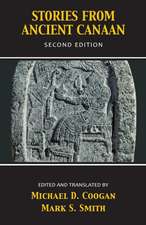Streams of Gold, Rivers of Blood: The Rise and Fall of Byzantium, 955 A.D. to the First Crusade: Onassis Series in Hellenic Culture
Autor Anthony Kaldellisen Limba Engleză Hardback – 14 sep 2017
| Toate formatele și edițiile | Preț | Express |
|---|---|---|
| Paperback (1) | 178.06 lei 31-37 zile | +48.93 lei 6-12 zile |
| Oxford University Press – 10 oct 2019 | 178.06 lei 31-37 zile | +48.93 lei 6-12 zile |
| Hardback (1) | 348.48 lei 22-36 zile | |
| Oxford University Press – 14 sep 2017 | 348.48 lei 22-36 zile |
Preț: 348.48 lei
Nou
Puncte Express: 523
Preț estimativ în valută:
66.70€ • 72.48$ • 56.07£
66.70€ • 72.48$ • 56.07£
Carte disponibilă
Livrare economică 31 martie-14 aprilie
Preluare comenzi: 021 569.72.76
Specificații
ISBN-13: 9780190253226
ISBN-10: 0190253223
Pagini: 440
Dimensiuni: 155 x 236 x 41 mm
Greutate: 0.75 kg
Editura: Oxford University Press
Colecția OUP USA
Seria Onassis Series in Hellenic Culture
Locul publicării:New York, United States
ISBN-10: 0190253223
Pagini: 440
Dimensiuni: 155 x 236 x 41 mm
Greutate: 0.75 kg
Editura: Oxford University Press
Colecția OUP USA
Seria Onassis Series in Hellenic Culture
Locul publicării:New York, United States
Recenzii
With excellent maps, genealogies, notes, glossary, bibliography, index, sometimes hard going, but always rewarding, this will be a key text to the period.
a significant addition to current scholarship, especially as a manual for the general audience
A stylish and fast-paced narrative that weaves politics, society, and individual characters together into a fascinating depiction of a lively, dynamic, and culturally diverse civilization at its height. Firmly rooted in the contemporary sources and with a well-tuned appreciation of current scholarly debates, Kaldellis' account is set to become the standard 'go-to' political narrative of the medieval eastern Roman or Byzantine empire in its heyday.
A learned and critical reassessment of the standard narrative, which is at the same time an engaging and lively account of an exciting period in the history of Byzantium.
Anthony Kaldellis' new history of Byzantium is a major achievement. By setting aside the pre-conceptions of much of the secondary literature, and returning to the sources, he is able to reconstruct the dynamics of imperial power and politics across the crucial years between the imperial expansion of the late tenth century and the First Crusade. This book will be required reading for students and scholars not only of Byzantium, but also of the Medieval West.
In this lucid and well-researched history, Kaldellis, a classics scholar, examines the rapid expansion and subsequent contraction of Byzantium in the 10th and 11th centuries. This work serves impressively as both a general introduction to the political, economic, and military history of the period and a narratively engaging and clear interpretation of the causes and effects of the empire's rise and fall. The book nicely balances explication and commentary; Kaldellis includes details that bring his history to life-such as the facial hair patterns of a Byzantine enemy ... The work is thus both educational and enjoyable, almost a canonical model of how to write history for both lay and professional readers. This is a welcome introduction to Byzantine history, which is little known in the West relative to earlier Greek or Roman periods and deserves wider understanding and discussion.
a significant addition to current scholarship, especially as a manual for the general audience
A stylish and fast-paced narrative that weaves politics, society, and individual characters together into a fascinating depiction of a lively, dynamic, and culturally diverse civilization at its height. Firmly rooted in the contemporary sources and with a well-tuned appreciation of current scholarly debates, Kaldellis' account is set to become the standard 'go-to' political narrative of the medieval eastern Roman or Byzantine empire in its heyday.
A learned and critical reassessment of the standard narrative, which is at the same time an engaging and lively account of an exciting period in the history of Byzantium.
Anthony Kaldellis' new history of Byzantium is a major achievement. By setting aside the pre-conceptions of much of the secondary literature, and returning to the sources, he is able to reconstruct the dynamics of imperial power and politics across the crucial years between the imperial expansion of the late tenth century and the First Crusade. This book will be required reading for students and scholars not only of Byzantium, but also of the Medieval West.
In this lucid and well-researched history, Kaldellis, a classics scholar, examines the rapid expansion and subsequent contraction of Byzantium in the 10th and 11th centuries. This work serves impressively as both a general introduction to the political, economic, and military history of the period and a narratively engaging and clear interpretation of the causes and effects of the empire's rise and fall. The book nicely balances explication and commentary; Kaldellis includes details that bring his history to life-such as the facial hair patterns of a Byzantine enemy ... The work is thus both educational and enjoyable, almost a canonical model of how to write history for both lay and professional readers. This is a welcome introduction to Byzantine history, which is little known in the West relative to earlier Greek or Roman periods and deserves wider understanding and discussion.
Notă biografică
Anthony Kaldellis is Professor of Greek and Latin at The Ohio State University. Author of The Christian Parthenon: Classicism and Pilgrimage in Byzantine Athens (CUP 2009) and Hellenism in Byzantium: The Transformations of Greek Identity and the Reception of the Classical Tradition (CUP, 2007), among numerous others.



































